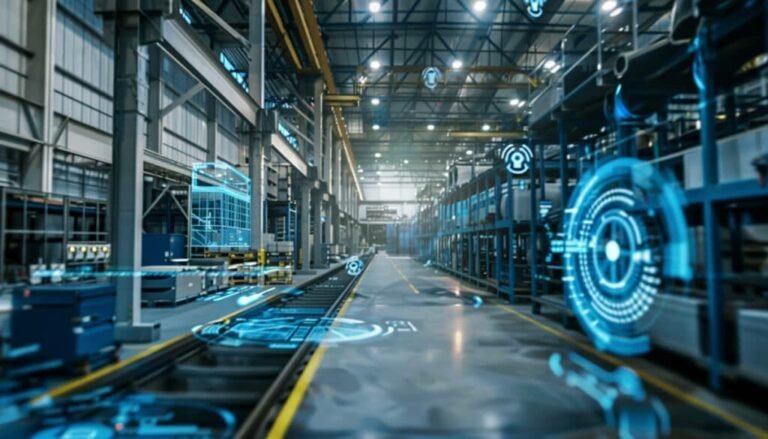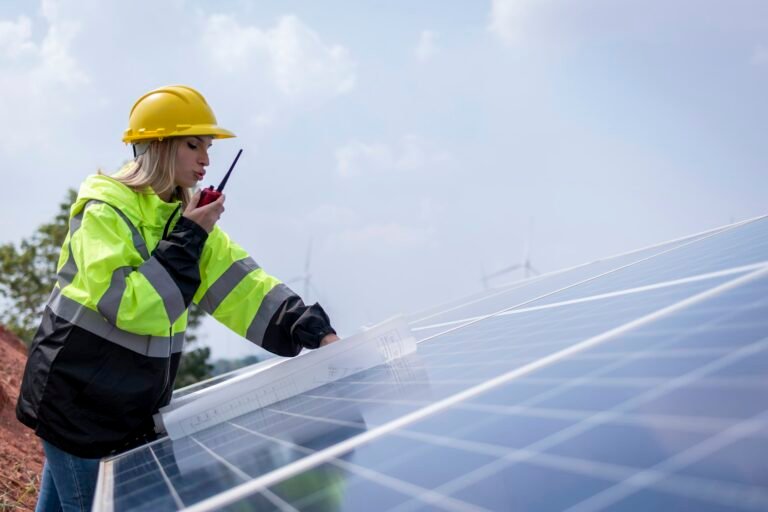How do you choose the right digital pressure manometer for your needs?
Understanding Digital Pressure Manometers
Digital pressure manometers have revolutionized how we measure and monitor pressure in various applications. These sophisticated instruments provide accurate, real-time pressure readings with enhanced convenience and precision compared to traditional analog gauges.
A digital pressure manometer converts pressure signals into electronic displays, offering superior readability and often including advanced features like data logging, alarms, and connectivity options. Understanding their fundamental operation is crucial before making your selection.
The technology behind these devices typically involves pressure sensors that convert mechanical pressure into electrical signals. These signals are then processed by microcontrollers and displayed on digital screens, providing immediate and precise measurements.
Modern digital manometers come in various configurations, from handheld portable units to permanently mounted industrial instruments. Each type serves specific purposes and applications, making the selection process critical for optimal performance.
Key Factors to Consider When Choosing
Selecting the right digital pressure manometer requires careful consideration of multiple factors that directly impact performance and suitability for your specific application. The decision process should begin with a thorough assessment of your measurement requirements.
Your primary consideration should be the intended application and environment where the manometer will be used. Industrial applications often demand different specifications compared to laboratory or field measurements.
The frequency of use is another crucial factor. Instruments used continuously require different durability standards compared to those used occasionally. Consider whether you need portable or stationary mounting options.
Integration requirements with existing systems should also influence your choice. Some applications require data logging capabilities, while others need real-time communication with control systems or computers.
Accuracy and Precision Requirements
Accuracy represents one of the most critical specifications when selecting a digital pressure manometer. Different applications demand varying levels of precision, and understanding your accuracy requirements is essential for proper selection.
High-precision applications such as calibration laboratories typically require accuracy levels of 0.025% or better. Industrial process monitoring might accept accuracy levels of 0.1% to 0.25%, while general maintenance applications could work with 0.5% accuracy.
Consider both the accuracy specification and the resolution of the display. Higher resolution doesn’t necessarily mean better accuracy, but it can provide more detailed readings when needed.
Temperature compensation is another accuracy-related feature that becomes important in environments with significant temperature variations. Quality instruments include automatic temperature compensation to maintain accuracy across operating temperature ranges.
See also: How Tech Is Changing the Face of Journalism
Pressure Range and Units
Determining the appropriate pressure range is fundamental to selecting an effective digital manometer. The instrument must cover your complete measurement range while providing optimal resolution and accuracy.
Consider both your typical operating pressure and any potential pressure spikes or variations that might occur. The manometer should handle maximum expected pressures without damage while maintaining accuracy throughout the range.
Unit compatibility is equally important. Ensure the instrument can display pressure in your preferred units, whether PSI, bar, kPa, mmHg, or other specialized units relevant to your industry.
Some advanced manometers offer multiple pressure ranges or auto-ranging capabilities, providing flexibility for various measurement scenarios within a single instrument.
Display and User Interface Features
The display and user interface significantly impact the usability and effectiveness of your digital pressure manometer. Clear, readable displays are essential for accurate measurements and efficient operation.
Screen size and readability under various lighting conditions should match your operating environment. Backlit displays become necessary for low-light conditions, while high-contrast displays work better in bright environments.
Button layout and menu navigation affect operational efficiency. Intuitive interfaces reduce training time and minimize operational errors, particularly important in industrial environments.
Consider additional display features like trend indicators, min/max value storage, and alarm indicators that can enhance operational efficiency and safety.
Power Source and Battery Life
Power requirements vary significantly among digital pressure manometers, and selecting appropriate power options ensures reliable operation in your specific application.
Battery-powered units offer portability and independence from external power sources, making them ideal for field measurements and portable applications. Consider battery type, life expectancy, and replacement availability.
AC-powered units provide continuous operation without battery concerns but require proximity to power sources. Some models offer dual power options, combining battery backup with AC operation.
Solar-powered options are available for remote monitoring applications where conventional power sources are unavailable or impractical.
Build Quality and Durability
Construction quality directly affects instrument longevity and reliability, particularly in demanding industrial environments. Robust construction protects internal components and ensures consistent performance over time.
Housing materials should match environmental conditions. Stainless steel housings provide excellent corrosion resistance, while reinforced plastics offer lighter weight and impact resistance.
Ingress protection ratings indicate the instrument’s ability to withstand dust and moisture. IP65 or higher ratings are typically required for outdoor or industrial applications.
Shock and vibration resistance become important considerations for mobile applications or installations subject to mechanical stress.
Environmental Considerations
Operating environment significantly influences manometer selection and performance. Temperature, humidity, and atmospheric conditions all affect instrument operation and accuracy.
Temperature operating ranges must encompass your application’s conditions. Some instruments include heating or cooling systems for extreme temperature applications.
Humidity and condensation can affect electronic components and display visibility. Sealed housings and humidity compensation features address these challenges.
Altitude and atmospheric pressure variations can affect measurement accuracy in some applications, requiring instruments with appropriate compensation features.
Calibration and Maintenance
Regular calibration ensures continued accuracy and reliability of digital pressure manometers. Understanding calibration requirements and available services is crucial for long-term ownership.
Calibration frequency depends on application criticality, operating conditions, and regulatory requirements. Some industries require annual calibration, while others may allow longer intervals.
Self-calibration features in some advanced instruments reduce calibration costs and downtime. However, periodic professional calibration remains necessary for maintaining traceability.
Maintenance requirements vary among instruments. Consider availability of replacement parts, service documentation, and local service support when making your selection.
Budget and Cost Analysis
Initial purchase price represents only part of the total cost of ownership for digital pressure manometers. Comprehensive cost analysis should include calibration, maintenance, and operational costs.
Higher-quality instruments often provide better long-term value through improved reliability, longer service life, and lower maintenance costs. Evaluate total cost over the expected instrument lifetime.
Consider warranty coverage and service support availability. Comprehensive warranties and accessible service reduce long-term ownership costs and operational risks.
Rental or leasing options might be cost-effective for short-term projects or applications with uncertain long-term requirements.
Industry-Specific Applications
Different industries have unique requirements that influence manometer selection. Understanding industry-specific needs helps narrow choices and ensure compliance with relevant standards.
Healthcare applications often require specialized pressure units and biocompatibility considerations. FDA approvals or medical device certifications may be necessary.
Aerospace applications demand lightweight construction, wide operating temperature ranges, and often require specialized certifications for aviation use.
Oil and gas industries require explosion-proof housings and certifications for hazardous area operation. ATEX or other safety certifications become mandatory requirements.
Popular Brands and Models
Several manufacturers dominate the digital pressure manometer market, each offering unique features and capabilities. Research popular models and their reputations within your industry.
Established brands typically offer better support, wider service networks, and proven reliability records. However, newer manufacturers might provide innovative features or better value propositions.
User reviews and industry recommendations provide valuable insights into real-world performance and reliability. Professional publications and trade associations often publish comparison studies.
Consider brand stability and long-term support availability when selecting instruments for critical applications or long-term installations.
Installation and Setup
Proper installation ensures optimal performance and longevity of digital pressure manometers. Installation requirements vary significantly among different instrument types and applications.
Mounting considerations include orientation requirements, accessibility for maintenance, and protection from environmental hazards. Some instruments have specific mounting orientation requirements for accurate operation.
Pressure connection types and sizes must match your system requirements. Standard connections simplify installation, while specialized connections might require additional fittings or adapters.
Electrical connections for powered instruments require appropriate power sources and may need integration with existing control or monitoring systems.
Troubleshooting Common Issues
Understanding common problems and solutions helps maintain reliable operation and reduces downtime. Most issues with digital pressure manometers relate to power, calibration, or environmental factors.
Display problems often indicate power issues, extreme temperatures, or internal component failures. Systematic troubleshooting procedures help identify and resolve these issues quickly.
Accuracy problems typically result from calibration drift, temperature effects, or mechanical damage to pressure sensing elements. Regular calibration and proper handling minimize these issues.
Communication problems in connected instruments often relate to cable connections, communication settings, or software configuration issues.
Future-Proofing Your Investment
Technology continues advancing in pressure measurement instruments. Selecting instruments with upgrade potential and modern communication capabilities helps protect your investment.
Connectivity options like wireless communication, cloud integration, and smartphone compatibility are becoming standard features in modern instruments.
Software updateability ensures your instrument can benefit from future improvements and feature additions without hardware replacement.
Modular designs allow component upgrades and feature additions as requirements change or technology advances.
Certified Material Testing Products (Certified MTP) is a leading supplier of construction materials testing equipment and laboratory supplies in the United States. They offer a comprehensive range of products for testing concrete, asphalt, aggregate, soil, and cement, catering to both field and laboratory applications. However, regardless of whether they are preferred or not, the underlying concept behind these tools is similar: achieving a polished, shiny, and permanent effect. Whether new to stucco or a seasoned pro, investing in quality tools and learning the nuances of their use is what will help you perfect your craft.
Frequently Asked Questions
Q: What accuracy level do I need for my application? A: Accuracy requirements depend on your specific application. Calibration work typically requires 0.025% or better, industrial process monitoring needs 0.1-0.25%, while general maintenance applications can work with 0.5% accuracy.
Q: How often should I calibrate my digital pressure manometer? A: Calibration frequency depends on usage, environment, and application criticality. Most industrial applications require annual calibration, while critical applications might need semi-annual or quarterly calibration.
Q: Can digital manometers work in extreme temperatures? A: Many digital manometers operate in wide temperature ranges, typically -20°C to 70°C. Specialized instruments are available for extreme temperature applications with ranges extending from -40°C to 125°C or higher.
Q: What’s the difference between gauge and absolute pressure measurement? A: Gauge pressure measures relative to atmospheric pressure, while absolute pressure measures relative to perfect vacuum. Your application determines which measurement type you need.
Q: Do I need wireless connectivity in my pressure manometer? A: Wireless connectivity enables remote monitoring, data logging, and integration with modern control systems. Consider this feature if you need remote access or automated data collection.
Q: How long do batteries typically last in portable digital manometers? A: Battery life varies significantly among models and usage patterns. Typical ranges are 100-500 hours of continuous operation, with some low-power designs achieving 1000+ hours.
Q: What protection rating do I need for outdoor use? A: Outdoor applications typically require IP65 or higher protection ratings to ensure adequate protection against dust and water ingress.
Q: Can I use a digital manometer for gas and liquid pressure measurement? A: Most digital manometers work with both gas and liquid applications, but verify compatibility with your specific media. Some applications require specialized materials or seals for chemical compatibility.






